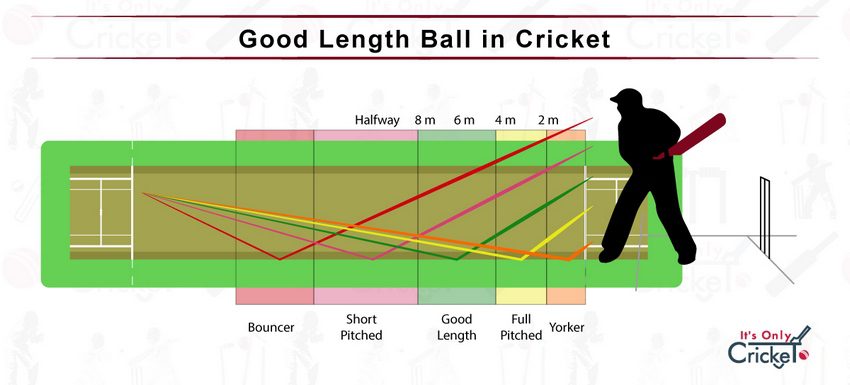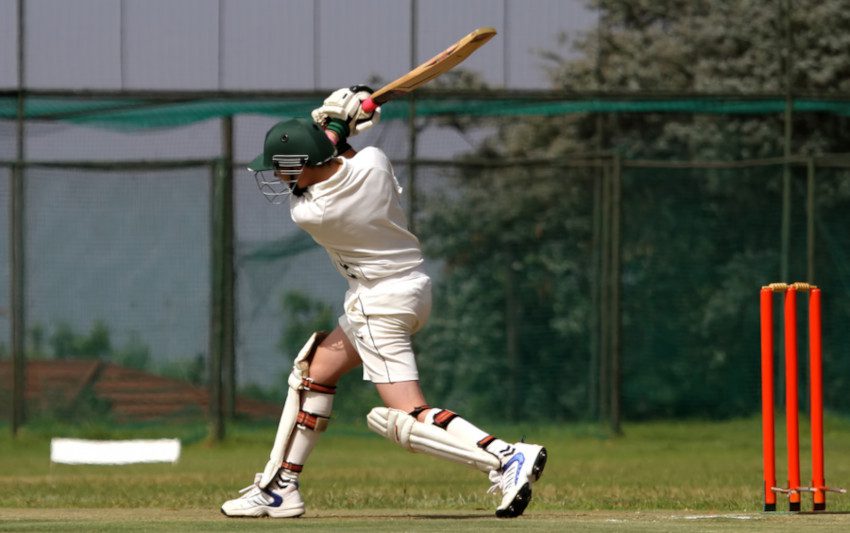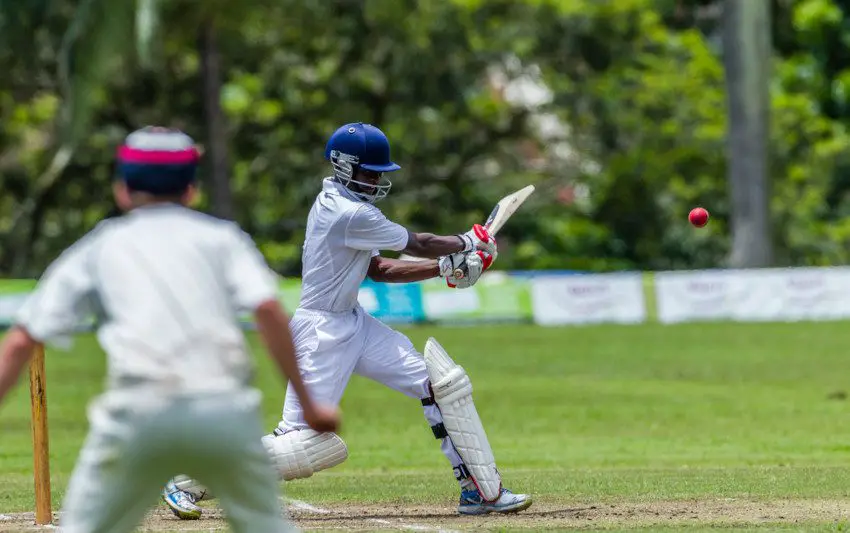Table of Contents
This is one delivery that bowlers will want to avoid. It’s important for all players to understand it so let’s take a moment to discuss the overpitched delivery.
What is an Overpitched Delivery?
An overpitched delivery will usually pitch close to the batter’s feet. It’s pitched far up the wicket and will generally reach that batter at below knee height.
This type of delivery is sometimes referred to as a half volley. It makes it relatively easy for the batter to play an aggressive stroke and is pitched ‘over’ an ideal length.
Reasons for Overpitched Delivery
Bowlers aren’t usually seeking to bowl an overpitched delivery. It can sometimes be a deliberate tactic, but mostly it will be down to a mistake on the bowler’s part.
Maybe they are looking to deliver a yorker and they get things slightly wrong. Alternatively, they could be aiming for their ‘good length‘ which is a ball that would hit the top of the stumps.
A bowler’s good length makes it difficult for the batter to hit an attacking shot. A defensive option is the better choice in these circumstances. Members of the batting side may also be unsure whether to go forward or back to that good length delivery.
An overpitched ball makes it much easier. A bowler will want to avoid this type of delivery so, when we look for reasons for the overpitched ball, it will almost always be down to a mistake.

Pros and Cons of Overpitched Delivery
There are few, if any, plus points when it comes to bowling an overpitched delivery. In the majority of cases, such a ball will give a big advantage to the batsman.
It’s possible, if that batter is moving around in their crease, for the overpitched ball to become a useful weapon. The batsman’s movement is usually more in evidence during limited overs games when they are trying to score quick runs.
A batter could go deep in their crease, expecting to deal with a yorker. If an overpitched delivery is sent down, this could then fall at a bowler’s good length.
Similarly, a batter might come down the wicket in the hope of turning a shorter ball into a half volley. An overpitched delivery could then become a yorker.
An overpitched ball may also work if it is used as a surprise delivery. Maybe the bowler has sent down a series of short pitched balls in an attempt to attack a perceived weakness in the batter’s technique.
If this continues to happen, the batter is likely to be expecting a short ball. An overpitched delivery will be a surprise and the likelihood is that he or she will play the incorrect shot.
Those are a few plus points but, in the main, the advantages are with a batsman when an overpitched delivery is sent down.
How to Avoid Bowling an Overpitched Delivery?
Nobody is perfect and no bowler will go through a career without sending down an overpitched delivery. Even the best professional cricketers will do this on occasions.
It may not be possible to prevent them completely, but there are ways in which bowlers can keep overpitched balls down to a minimum. There’s no great mystery to the method and it all involves plenty of practice.
Before a bowler can work on any variations, they need to master line and length. An easy drill in the nets involves setting down targets at the point on which you want to bowl.
Cones are the most obvious items to use and most clubs and training facilities have these. As long as something represents a substantial target it can be used. Remember, it doesn’t matter if that target prevents the ball from going on to hit the stumps. What we are aiming for is to practise line and length and hitting those cones as much as possible.
Keep doing this regularly and, even if you are happy with your line and length, aim to continue to practise between matches.
Which Shots are the Best for an Over Pitched Ball?
As a batter, the best shot to be played to an overpitched delivery is the drive. The ball should arrive at below the knee height and this makes it a natural point for those drives.
The batter can do less work with an overpitched ball: The bat swings naturally through the line and, if executed correctly, it will travel quickly towards the boundary.
If a slow bowler sends down an overpitched delivery, a sweep shot can come into play. The batter can either play a conventional sweep or a reverse sweep, depending on the line of the ball.
That line will also dictate where the shot travels to. With the drives, all options are available with the off drive, straight drive, on drive and square drive all in play. If the ball is wider of off stump, the glide to third man becomes another option.
If the ball is a surprise delivery, the batter should be able to comfortably play a forward defensive. No runs are likely but their wicket should be kept intact, and that’s the real issue for the bowler. An overpitched ball is an innocuous one and it’s less likely to take wickets.
Conclusion
The term ‘overpitched delivery’ is usually used in a negative context and rightly so. In most cases, such a ball will make things very easy for a competent batter. This may not always be the case, however, and an overpitched ball can still take wickets.
The batter may simply miss the ball completely and, if the delivery is straight enough, they can be given out LBW. Bowled and caught dismissals aren’t out of the equation either.
However, the delivery isn’t ideal as far as a bowler is concerned. It’s easier for the batter to play and much harder for the bowler to get a dismissal. In conclusion, the over pitched ball isn’t the worst option for a bowler. It can take a wicket, but it does give the batter a greater advantage in most situations.


